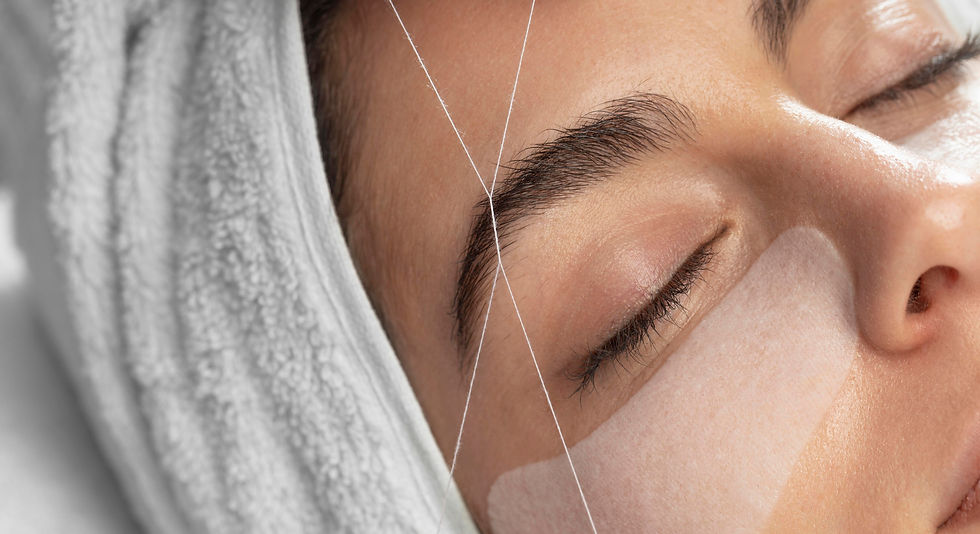Exploring Diverse Henna Art: Beyond Hand Designs
- Amrinder Sangha
- Jul 7, 2024
- 3 min read
Updated: Feb 25
Henna, an ancient tradition of intricate hand designs, has evolved into a canvas for artistic expression across the body. At Deux Chic Esthetiques, our Expert Henna & Mehndi Artists in Kitsilano bring the beauty of henna beyond the hands, exploring unique applications on feet, arms, back, and torso. Whether you're looking to adorn yourself for a special occasion or simply express your creativity, henna offers endless possibilities for self-expression and cultural celebration.

Understanding Henna: A Cultural & Artistic Legacy
Henna, derived from the Lawsonia inermis plant, holds deep cultural significance across the globe. From ancient Egypt to India, henna has played a vital role in weddings, religious ceremonies, and social events, symbolizing joy, beauty, and auspicious beginnings.
A. Historical Roots
In ancient Egypt, henna was used to adorn royalty, symbolizing status and celebration.
In Indian and Middle Eastern traditions, henna, or mehndi, is an essential part of weddings, symbolizing love, happiness, and prosperity.
B. Cultural Reverence & Medicinal Benefits
Beyond body art, henna has been valued for its cooling properties, used to soothe headaches and skin irritations. Traditionally, its application is believed to bring blessings and good fortune.
C. Henna Varieties
Natural Henna: Made from pure henna leaves, providing a reddish-brown stain.
Black Henna: Contains synthetic dyes and chemicals, often leading to skin reactions; not recommended.
Henna Beyond Hands: Expanding the Canvas
Traditionally applied on hands and feet, henna artistry has expanded to various body parts, offering new dimensions of creativity.
1.Henna on Feet
Feet serve as an exquisite canvas for henna designs, enhancing beauty while holding cultural significance in various traditions. Intricate motifs adorning the toes and arches create a captivating aesthetic.
2.Henna on Arms and Legs
Unlike compact hand designs, arms and legs allow for elongated and flowing patterns, accentuating the body's natural contours. Whether cascading down the arms or wrapping around the legs, henna here adds an enchanting touch.
3.Henna on Back and Torso
The back and torso provide a broad canvas for artistic expression. These areas allow for large, intricate patterns that complement the body's natural curves, creating breathtaking masterpieces.
4.Henna for Special Occasions
From weddings to festivals, custom henna designs reflect the significance of special events. Whether incorporating cultural symbols or blending modern aesthetics, henna adds a personal touch to celebrations.
Mastering Henna Application: Tips & Techniques
To achieve flawless henna designs, follow these expert tips:
Perfect Paste Consistency: The henna paste should be smooth and creamy for easy application.
Cone & Piping Control: Steady pressure ensures clean lines and intricate detailing.
Prepping the Skin: Clean, oil-free skin enhances henna absorption for long-lasting color.
Design Drafting: Sketching the pattern beforehand helps maintain symmetry.
Drying & Sealing: Allow henna to dry naturally and seal it with lemon juice and sugar for a rich stain.
Henna Safety & Aftercare
Ensuring a safe and long-lasting henna experience requires proper care.
Patch Test: Always test henna on a small skin area to check for allergies.
Quality Matters: Opt for natural, chemical-free henna to prevent skin irritation.
Proper Aftercare: Avoid washing the area for at least 12 hours post-application. Moisturize with natural oils to maintain vibrancy.
Sun & Chemical Protection: Limit exposure to UV rays and chlorine to prevent fading.
Enhance Your Beauty with Deux Chic Esthetiques
At Deux Chic Esthetiques, we go beyond henna artistry. Our services include:
Expert Henna & Mehndi Artists in Kitsilano – Custom designs for all occasions.
Body Waxing Services in Kitsilano – Smooth, flawless skin with professional waxing.
Kids Spa Birthday Party in Kitsilano – A fun and pampering experience for little ones.
Experience the rich tradition and artistry of henna with us. Book your appointment today! For bookings, call 604.569.3502, email info@deuxchic.ca, or visit our contact page



Comments